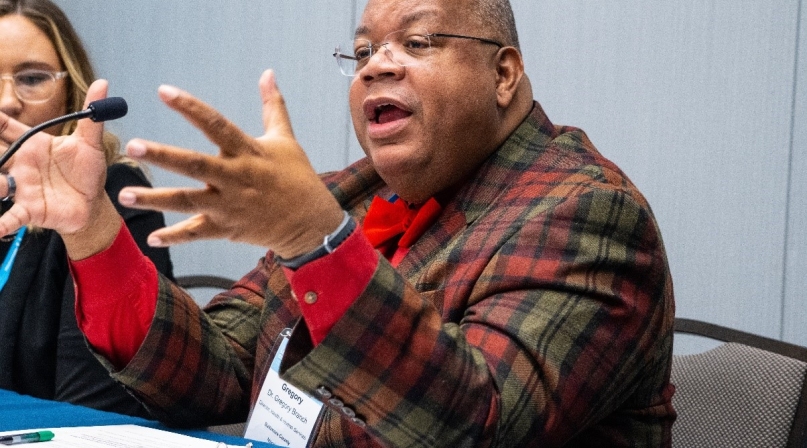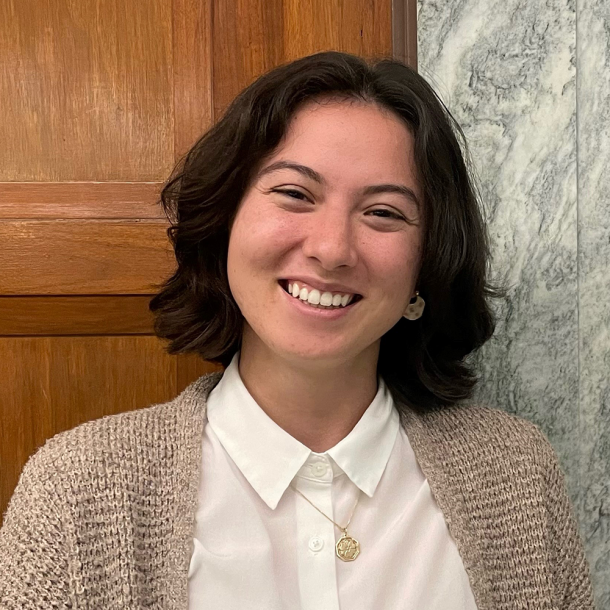County Officials Discuss Harm Reduction as a Path Forward through the Overdose Epidemic
Author
Upcoming Events
Related News

In 2021, over 100,000 people died from drug overdose – more than any year in American history. At NACo’s 2023 Legislative Conference, county officials discussed harm reduction as a path forward through the opioid epidemic. Harm reduction is both a large scale and individual approach to serving people with substance use disorder (SUD) that aims to minimize negative health outcomes for people who are underserved by the formal treatment system. Harm reduction strategies range from low-barrier access to sterile supplies for safer substance use (a core function of syringe services programs, or SSPs), same day access to medications for opioid use disorder (MOUD), to helping people access services and resources that meet their individual hierarchy of needs.
“Dead people don’t recover, so we have to keep people alive, however that is.” - Lauren Carr, Graves County Agency for Substance Abuse Prevention, Ky.
Harm Reduction as a Path Forward
At the workshop, moderator Nick Szubiak of NSI Strategies discussed the traditional SUD continuum of care, which encompasses primary prevention, early intervention, treatment and recovery. To achieve a recovery-oriented system of care, it is critical to have multiple touchpoints. For many people with SUD, harm reduction offers this opportunity: People who participate in SSPs are five times more likely to enter into treatment for SUD than those who do not. SSPs also offer other health, social and harm reduction services, like linkages to care, overdose prevention education and naloxone distribution. For example, The Exchange in Graves County, Ky. offers fentanyl test strips, naloxone, MOUD education and referrals, wound care, coordinated care and more.
Three County Perspectives
Three members of NACo’s Opioid Solutions Leadership Network (a national cohort of 30 county leaders pursuing innovative and evidence-based solutions with opioid settlement funds) joined the harm reduction workshop as panelists.
Dr. Gregory Wm. Branch is the director of the Department of Health and Human Services in Baltimore County, Md. as well as an internal medicine practitioner. During the panel, Branch emphasized the importance of providing holistic care and compassion for treatment of SUD, the same way providers treat other diseases.
Lauren Carr is the executive director for the Graves County Agency for Substance Abuse Prevention. Carr runs the only SSP in a two-hour radius of her county in western Kentucky. Reflecting on the role of SSPs in her community, Carr noted the association between intravenous drug use and the spread of communicable disease, particularly Hepatitis C and Human Immunodeficiency Virus (HIV). By providing access to sterile syringes, SSPs reduce the spread of disease and reduce healthcare costs. It costs 10 cents to provide a sterile syringe to someone who uses drugs compared to $80,000 to treat Hepatitis C and $600,000 over a lifetime to treat HIV.
Marlene Collick is the deputy director of Community Corrections in Genesee County, Mich. During the panel, Collick highlighted her experience as someone with OUD as well as her work in community corrections. Community corrections provides holistic, evidence-based, recovery-oriented and trauma-informed pathways to care for people involved in the justice system. This perspective is an alternative to abstinence-only approaches and creates increased opportunities for people to receive holistic health and social services and engage in recovery. Collick noted that recovery is a process that “takes a village and collective efforts.”
Key Takeaways
In the U.S., SUD is often heavily stigmatized and treated as an individual moral failing. However, healthcare best practices frequently use personal connections to patients and harm reduction strategies to provide and encourage care; for example, through family planning or medication for high cholesterol/heart disease. Branch presented this comparison: If a person becomes incarcerated in a detention center and has high blood pressure, blood pressure medication will be continuously provided. However, if a person becomes incarcerated who has OUD, they may be forced to discontinue the medication they were prescribed for treatment, such as buprenorphine, upon entering the detention center.
Both Carr and Branch noted that residents are often resistant to locating SUD treatment facilities or programs in their neighborhoods. However, SUD affects people in all communities. For example, community support for an SSP in Graves County (the Exchange) came about in part due to the large number of discarded syringes in the community. The Exchange has not only reduced syringe litter in the community (in 2022, 97% of the sterile syringes it distributed were returned), but it also reduced spread of HIV and Hepatitis A and C; connected more people with SUD to treatment; and decreased the number of fatal overdoses, as SSPs are the most effective distributors of naloxone.
Collick noted that in Michigan and many other states, it can take five years before people who receive treatment with MOUD can take home their medications. This means traveling to a methadone clinic or other opioid treatment provider once a day, every day; standing in line; taking the medication there and arranging transportation back. These types of barriers to receiving treatment for SUD exist across the continuum of care.
“You can go to the doctor and get basically any opioid that you want, that you need, but the one opioid they can’t prescribe is methadone. If you need to be on methadone that is proven to be effective treatment, you have to go to a methadone program… Because we treat these drugs this way, we’ll never get ahead of it. We need to make changes in the fundamental things we do.” – Dr. Gregory Branch, Baltimore County, Md.
As funds from the national opioid settlements roll out, counties have a unique opportunity to implement programs over the next 17 years that will change the trajectory of the opioid epidemic. Moving forward, evidence-based strategies like enhancing naloxone access and providing clean syringes will save lives, reduce the spread of infectious diseases and provide touchpoints for people to move toward treatment and recovery. Providing hope, self-determination and barrier-free pathways to care are cornerstones for paving a path through the opioid epidemic.
To learn more about the proven impact of SSPs and successful local examples, read NACo’s strategy brief here.
Counties may also request free technical assistance through the Opioid Response Network. ORN offers no-cost, evidence-based training and education to meet local needs in addressing the opioid crisis.
Featured Initiative
Opioid Solutions Center
NACo's Opioid Solutions Center empowers local leaders to invest resources in effective treatment, recovery, prevention and harm reduction practices that save lives and address the underlying causes of substance use disorder.

Related News

SAMHSA cancels, reinstates thousands of behavioral health grants
Late on Wednesday, January 14, the Administration announced that thousands of Substance Abuse and Mental Health Services Administration (SAMHSA) grants that had been terminated just one day earlier would be reinstated.

CMS requires state Medicaid suspension upon arrest versus termination
Effective January 1, 2026, federal law now requires states to suspend, rather than terminate, Medicaid coverage when an individual is incarcerated.

